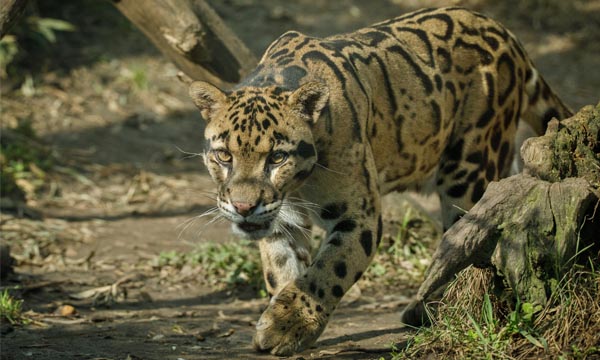Namdapha National Park is a breathtaking sanctuary located in Arunachal Pradesh. This national park is not only one of the largest protected areas in India but also a haven for diverse wildlife and rich flora. It covers an area of approximately 1,985 square kilometers and is part of the larger Namdapha Tiger Reserve.
Rich Biodiversity
Namdapha National Park is renowned for its incredible biodiversity. The park is home to over 1,000 species of plants and more than 400 species of animals. Among its inhabitants are the majestic Bengal tiger, elusive snow leopard, and the rare hoolock gibbons. Birdwatchers will find paradise here, with more than 300 bird species recorded, including the beautiful great Indian hornbill.
The park's varied altitudes range from 200 meters to over 4,500 meters above sea level. This elevation creates a range of habitats, from tropical evergreen forests to alpine meadows. The diversity of ecosystems allows for a wide variety of flora, including numerous medicinal plants, orchids, and towering trees.
Getting There
Reaching Namdapha National Park is an adventure in itself. The nearest town is Miao, which is well connected by road. From Miao, visitors can travel to the park’s entrance. The nearest airport is in Dibrugarh, Assam, followed by a scenic drive through lush landscapes. For those coming by train, the closest railway station is in Tinsukia, Assam.
Namdapha National Park Safari
One of the best ways to explore the wonders of Namdapha National Park is through a safari. There are various options available, catering to different preferences and budgets. Here are some popular ways to experience the park:
- Jeep Safaris: For those looking for a comfortable experience, jeep safaris are a great option. These safaris cover significant parts of the park and provide the opportunity to see wildlife from a safe distance.
- Trekking: For the more adventurous, trekking through the park is an unforgettable experience. There are several trekking routes that lead to breathtaking viewpoints and hidden waterfalls. Guides are available to help navigate the trails and spot wildlife along the way.
- Bird Watching: Birdwatching safaris are a favorite among ornithologists and nature enthusiasts. With a knowledgeable guide, visitors can learn about the different species and their habitats while enjoying the serene beauty of the park.
- Camping: For those who wish to immerse themselves in nature, camping is an option. Overnight stays in designated camping areas allow visitors to experience the park’s sounds and sights up close, from chirping birds to rustling leaves.
Best Time to Visit
The best time to visit Namdapha National Park is between November and April. During this period, the weather is pleasant, and wildlife is more active. The summer months can be hot, while the monsoon season brings heavy rainfall, making some areas inaccessible.
Local Culture and Community
Namdapha National Park is not just about its natural beauty; it is also home to several indigenous communities. These communities, including the Miji, Lisu, and Monpa, have lived in harmony with nature for generations. Visitors can engage with local tribes, learn about their customs, and even taste traditional cuisine. This cultural exchange enriches the overall experience of the park.
Conservation Efforts
Conservation is crucial in Namdapha National Park. The park is part of the larger Eastern Himalaya biodiversity hotspot, and numerous organizations work to protect its wildlife and habitats. Eco-tourism initiatives aim to create awareness and promote sustainable practices among visitors and locals. By participating in these efforts, tourists can contribute to preserving the beauty of Namdapha for future generations.
Safety and Guidelines
When visiting Namdapha National Park, it is essential to follow safety guidelines to ensure a safe and enjoyable experience. Here are a few tips:
- Stay with Guides: Always explore the park with an authorized guide. They are familiar with the terrain and can provide valuable information about the wildlife.
- Respect Wildlife: Maintain a safe distance from animals. Feeding wildlife is strictly prohibited, as it can alter their natural behavior.
- Leave No Trace: Ensure that you carry out everything you bring into the park. Littering is harmful to the environment and wildlife.
- Follow Park Rules: Abide by all park regulations to protect both the ecosystem and your safety.
Conclusion
Namdapha National Park is a treasure trove of natural beauty and biodiversity in Arunachal Pradesh. Whether you are an avid nature lover, a wildlife enthusiast, or simply looking for an escape into nature, this national park offers something for everyone. From thrilling safaris to serene treks, each experience is a chance to connect with the wild. As you explore the lush forests, listen to the sounds of nature, and witness the stunning wildlife, you’ll understand why Namdapha is a must-visit destination in India. Embrace the adventure, respect the environment, and create memories that will last a lifetime!





Comments